Need for Speed and Hydration
Staying well hydrated is extremely important for any human being, and it’s particularly essential for athletes. Formula 1 drivers are no exception to this rule. They lose over three liters of water during one race!
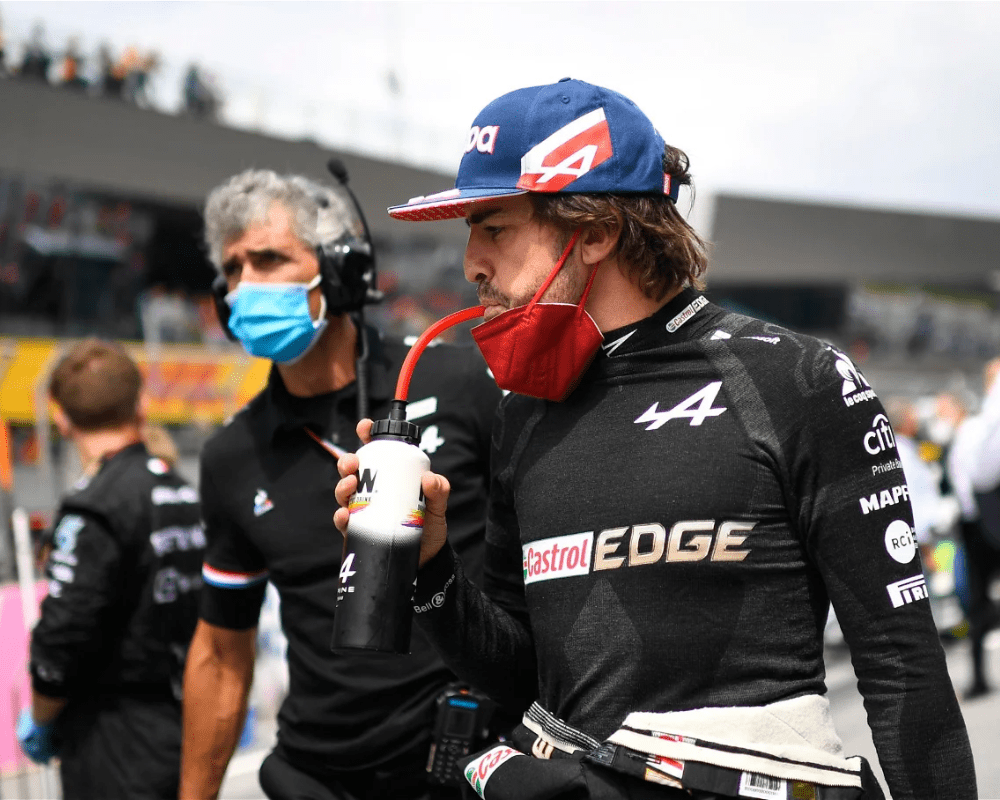
A combination of their thick suits, expending a lot of energy to withstand the different forces at play, and hot weather in a tight space cause them to lose tons of water weight. We bet they drink way more water than the average person.
Age Is Just a Number
Juan Manuel Mangio was an Argentinian F1 driver and is often considered one of the greatest of all time. He was the world champion five times and was the oldest driver to win an F1 title.

The average age of Formula 1 drivers is mid-20s. It takes a high level of physical fitness and endurance to get through each race. Juan won at 46 years old, which is over 20 years older than the majority of drivers in the sport!
Toughest Helmets in the World
While F1 cars go through rigorous safety testing, the driver also needs to wear equipment to offer the ultimate protection, since ultimately, the driver is more important than the car. That’s why F1 helmets are the toughest in the world.

They go through fragmentation and deformation tests and are made of two layers with carbon fiber as the primary material. They’re extremely light but extremely effective. They protect the drivers from head and neck injuries, which are the most common injuries they could experience.
The Engine Lifespans Are Short
House flies live an average of 28 days. An F1 engine, on the other hand, only holds out for five to seven races, often lasting less than five. So assuming the drivers compete in several races in a month, a house fly may be around longer!
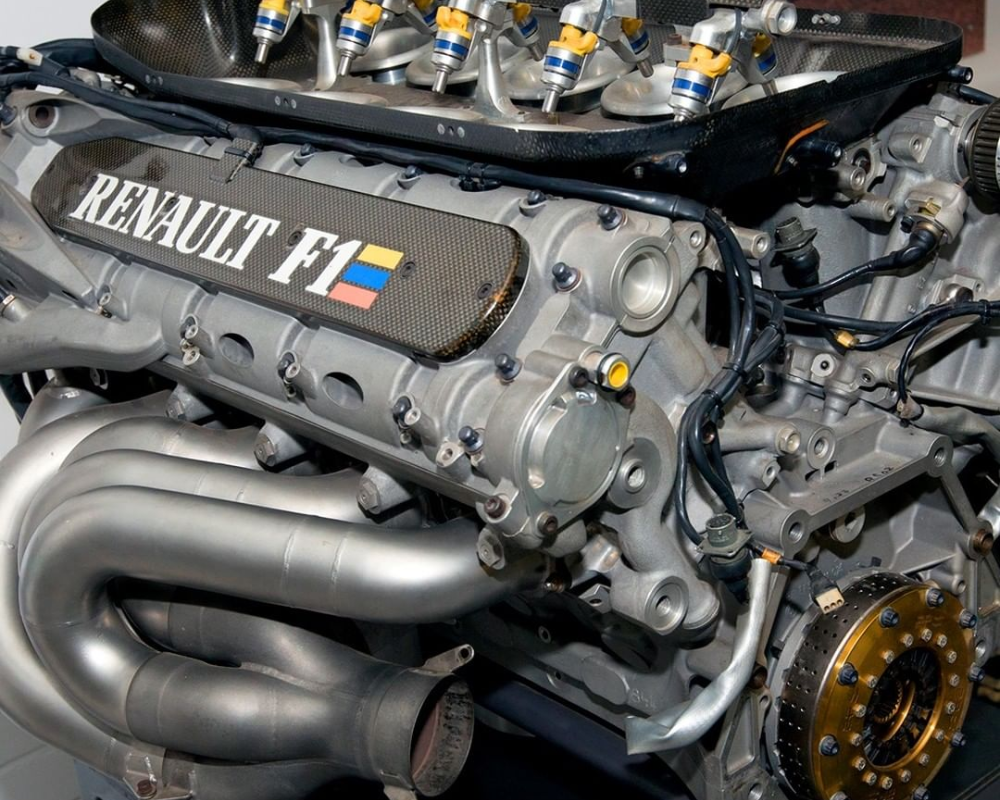
F1 engines are built for speed and precision, which means they are more exposed to extreme wear and tear than a normal car engine. The engine’s tolerance is on a whole other level, and a lot of time and money goes into them.
They Slim Down During Races
Many sports are physically taxing on their athletes, but F1 takes it to another level. It can reach temperatures up to 122°F in the cockpit, but the drivers can’t simply wear lightweight clothing to make up for it.

They wear fireproof race suits, with extra clothing underneath that’s also fireproof and heavy. This means they sweat A LOT. Add the G-forces they withstand in a race, and you’ve got drivers losing an average of 4 to 6 pounds per race.
Pit Stops Are Lightning Fast
A normal person would probably take a few minutes to refuel their car, and an hour or two to change the tires. But F1 pit stop crews aren’t normal people. They do these things in a matter of seconds – three or less, to be exact.

Their speed and precision allow the driver to have as much time as possible to focus on the race. Some crews are so precise that they’ll only add just enough fuel to get the driver through, making the car as light as possible.
F1 Engines Rev Up to 15,000RPM
RPM, or revolutions per minute, measures how fast a machine is operating and connects to how much power the vehicle is using. The RPM range for normal road cars is usually between 1,500 and 2,000.
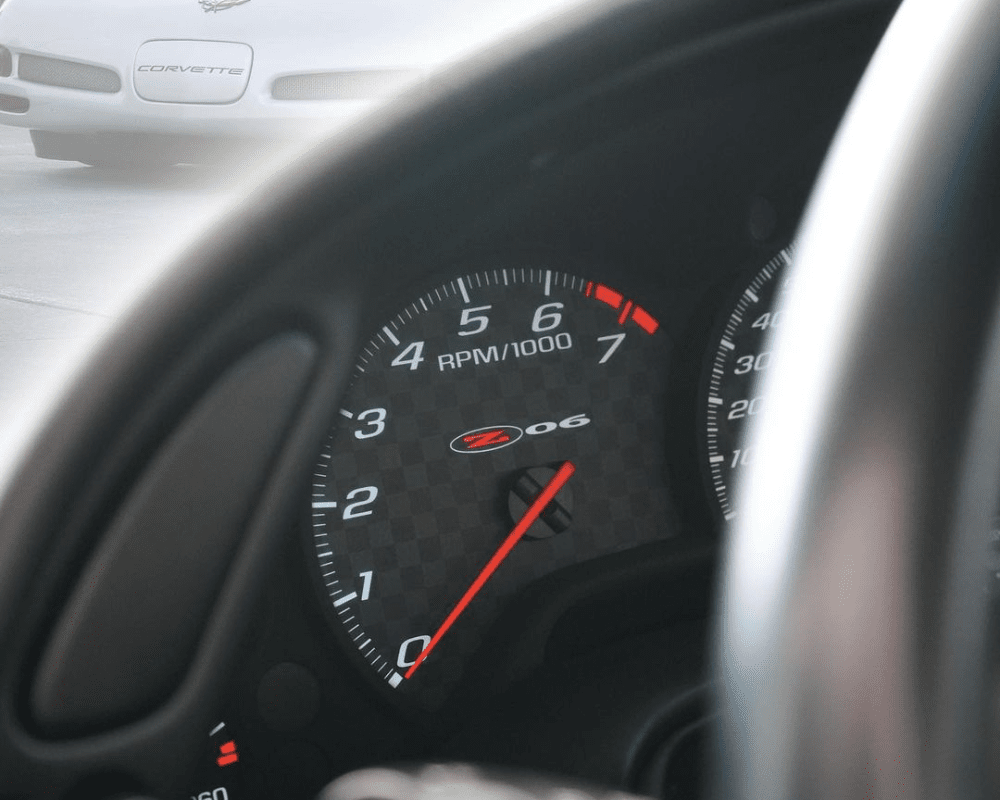
We all know that an F1 car needs more power than the average car. Their engines can rev up to 15,000RPM, more than double the 6,000 limit of a normal car! If that doesn’t scream powerful, what does?
One of the Most Publicized Events
Some sporting events are more popular around the world than others. The Olympic Games, for example, are viewed all over the world, and the FIFA World Cup ranks pretty high, too. But Formula 1 also draws in a lot of viewers.

Over 400 million people around the world watch Formula 1 on television, making it one of the world’s most publicized events. For comparison, the Super Bowl hovers between 90 and 120 million viewers each year.
Leading Drivers of All Time
Competition amongst drivers is something that pushes them to their best in each race. You may be asking yourself who has won the most Formula 1 World Driver’s Championships, and the answer is not one, but two people!

At seven titles each, Lewis Hamilton and Michael Schumacher are tied for the most championships won. Schumacher’s earliest win was in 1994, and his most recent was in 2004. Hamilton’s earliest win was in 2008, and his most recent was in 2020.
Ferrari Is F1’s World Leader
Ferrari has been around since the very beginning of Formula 1. The team has a long history with the sport, and it’s a very successful one. In the same way that drivers compete for points in the driver’s championship, teams get points in the Constructors Cup.
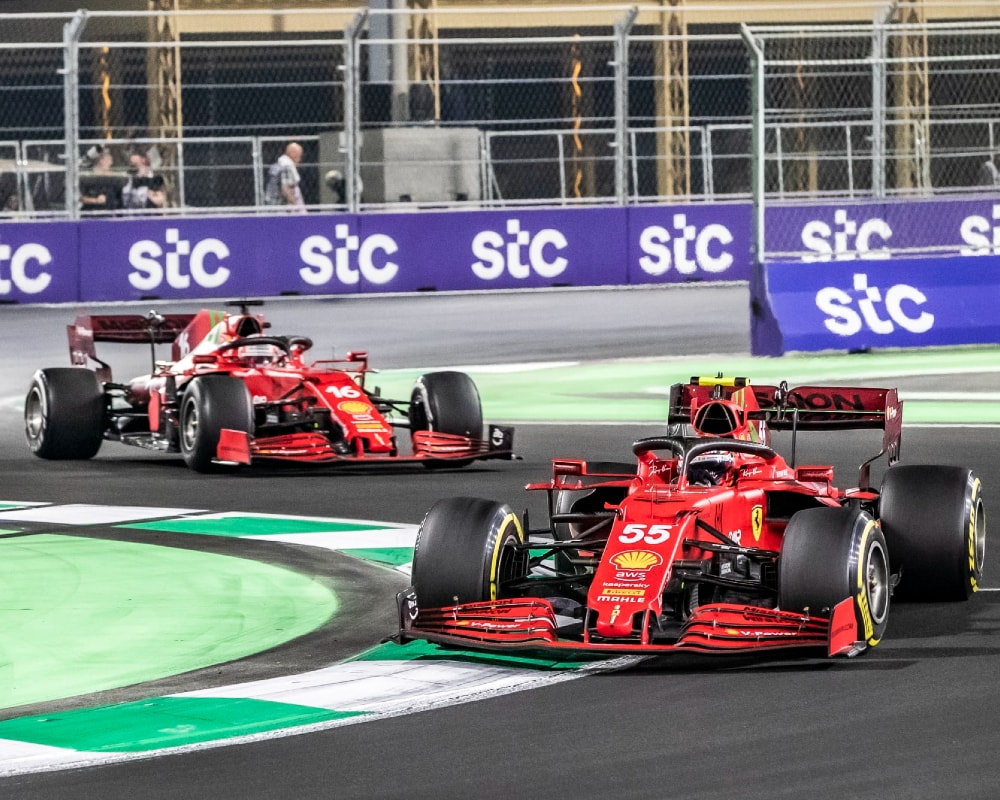
Ferrari holds the number one spot in almost all Constructor Cups. They also have the most Grand Prix wins at 238 and the most World Championships won at 16. Talk about an efficient team!
Hamilton Is a Record Breaker
It’s hard to watch Formula 1 and not know who Lewis Hamilton is. Currently considered one of the greatest drivers of all time, he’s been winning races left and right since he joined the sport in 2007.

In his career, Hamilton has won a whopping 103 Grand Prix races, which made him the first driver to break triple figures in F1 history. We can only assume that he’ll have many more wins under his belt before he decides to retire.
One Company’s Monopoly on Tires
Any car with bad tires is going to have issues, and there’s nowhere that this is more true than in Formula 1. Their tires go through extreme stress and have a much shorter lifespan than a normal car tire. There’s one company that has a monopoly on the industry.
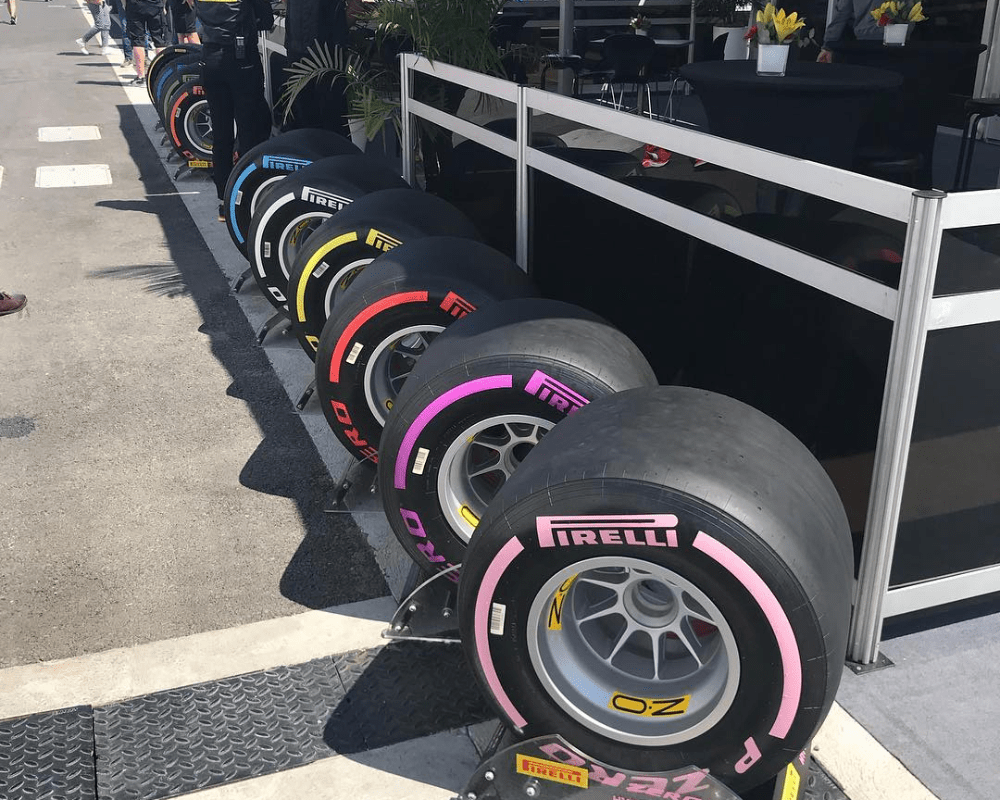
Pirelli has been the sole supplier for F1 since 2010. Their new tires took over 10,000 hours of testing and over 70 prototypes. That’s a dedication to providing the best.
Fastest Pit Stop Ever
We’ve already seen that the average pit stop only takes three seconds, which is insanely fast when you consider that they are changing four tires and refueling in that short timeframe. But what was the shortest pitstop on record?
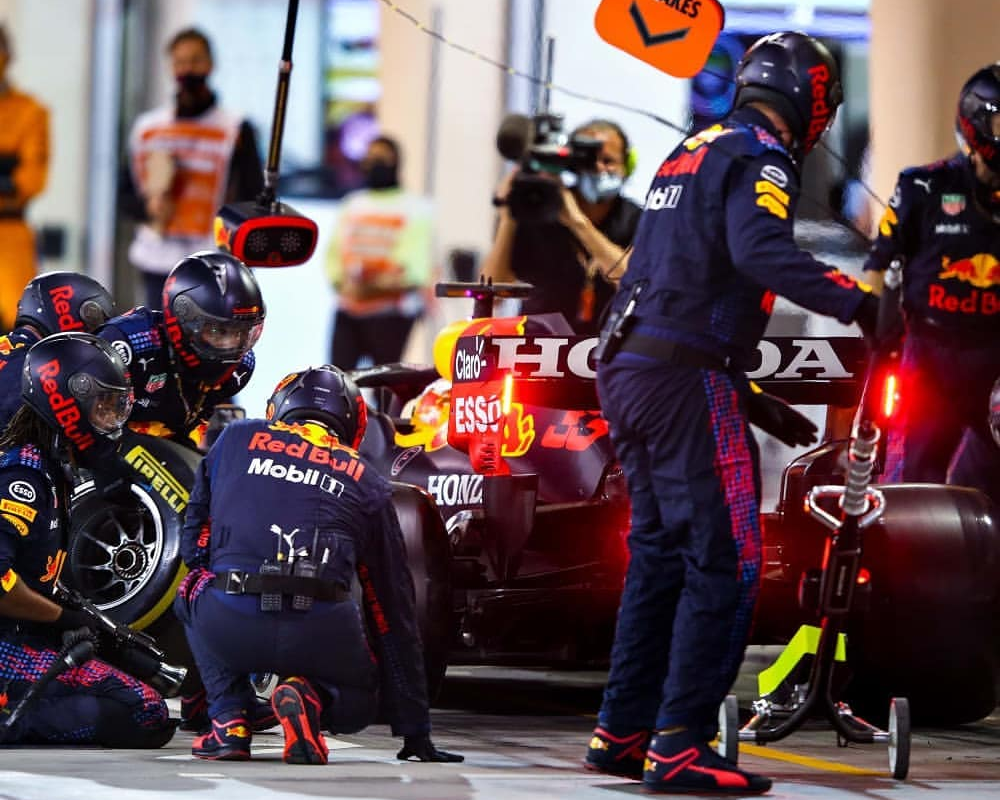
That honor goes to the Red Bull team, who had a pit stop of just 1.82 seconds during the Brazilian Grand Prix. That’s faster than blinking five times! It’s amazing what teamwork and precision can do.
There’s a Big Gender Imbalance
If there’s one thing that’s getting more attention lately, it’s the gender imbalance in many sports. If you look at single-player sports where men and women can participate together, they’re always very male-dominated.

Formula 1 is unfortunately no exception. It’s been more than 45 years since a woman has finished an F1 Grand Prix. Lella Lombardi won 12th place at the 1976 Austrian Grand Prix. No woman has ever won a grand prix or even scored a point. How sad is that?
F1 Is Sometimes Deadly
Sometimes accidents in a sport are inevitable and occasionally deadly. 52 drivers have lost their lives in Formula 1 accidents, and each accident has spawned an increase in safety measures. The sport has taken the accidents very seriously.
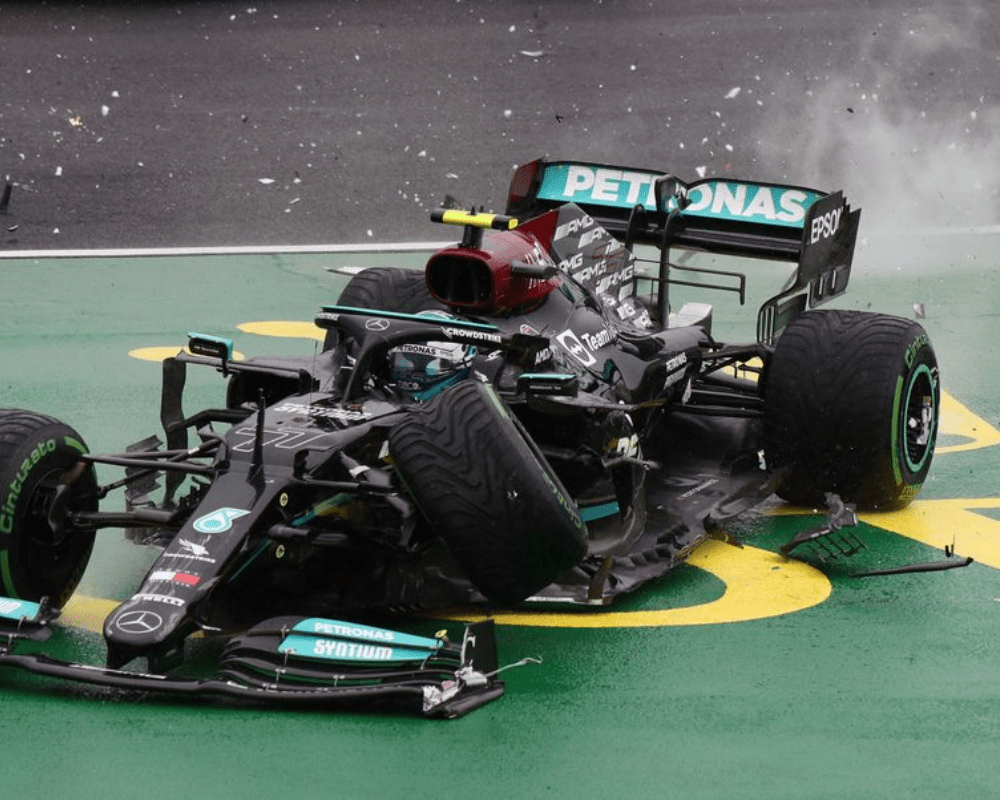
The good news is that no drivers have met an early demise during a race since 1994, which is great evidence that the safety changes Formula 1 has made have been worth it. However, in 2014, Jules Bianchi went into a coma and ultimately passed away months later as a result of the accident.
Teams of Up to 600
Some may think of a Formula 1 team as being the driver, the pit crew, and a few others. In reality, there’s a massive team behind the scenes ensuring both a successful race and the success of the team itself.
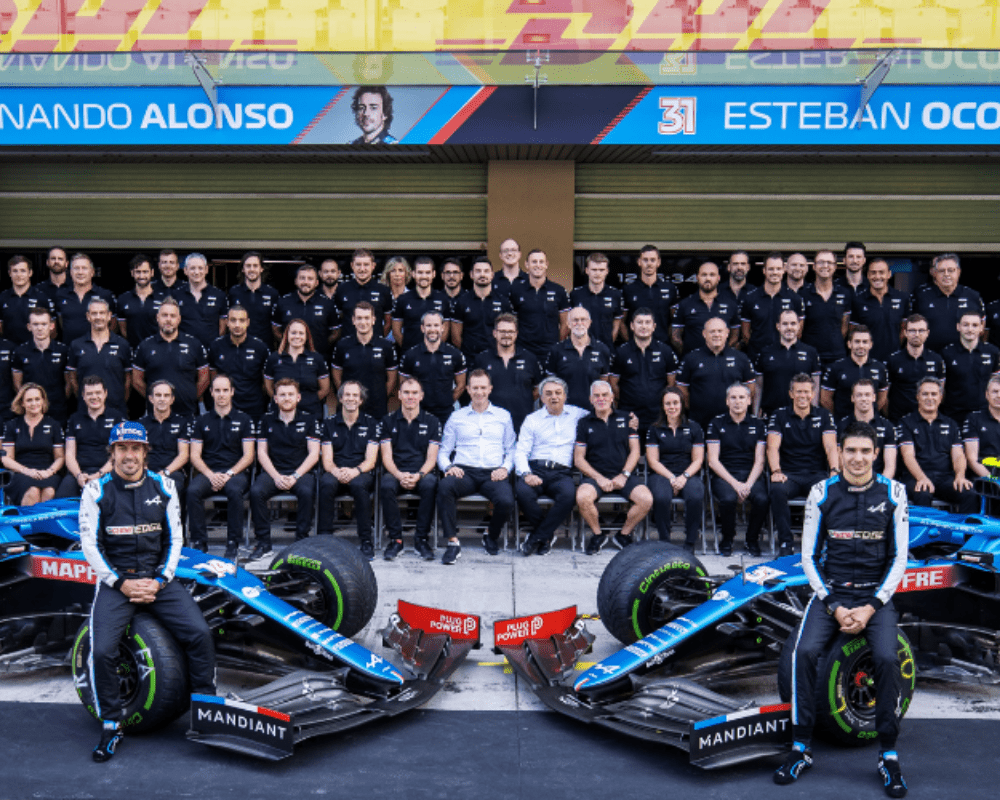
Teams can be upwards of 600 people when you factor in the active race crew, engineers, mechanics, public relations crew, managers, test drivers, and many more. That’s a lot of people that have to work together seamlessly.
Very Complicated Steering Wheels
Modern steering wheels in normal cars are much fancier than they used to be. They often feature volume controls, dashboard controls, and other bells and whistles in addition to the horn. But Formula 1 steering wheels are even more complicated.

They can have upwards of 25 buttons, which help them control every aspect of the car, like changing the way the brakes function for ultimate control corner to corner. Imagine what could happen if they accidentally press the wrong one!
Racing Career Change
There are many types of motorsports out there, and each one presents its own unique set of challenges. Due to this, it’s not super common for a driver to change once they’ve settled into a sport, but it does happen.

Mario Andretti is a great example, being one of only two drivers who has been successful in more than Formula 1. He’s also won races in NASCAR, the World Sportscar Championship, and IndyCar. He’s the very definition of adaptable.
The Brakes Are H.O.T.
A Formula 1 brake disc can reach a temperature of up to 1,000 celsius during a race. That’s as hot as molten lava. So when Max Verstappen needs to decelerate from 400 to 60kph in half a second, he needs to trust his brakes.
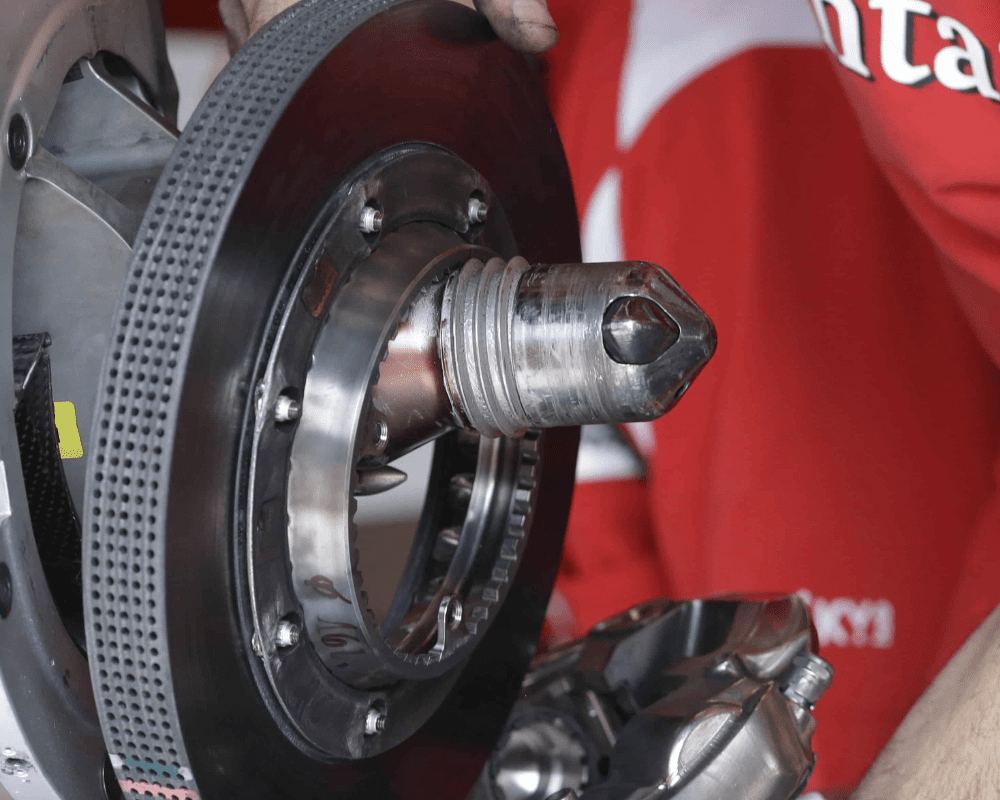
The brake discs need to be nigh on indestructible. They’re made of carbon fiber for strength and lightweightness, and they have 1,200 heat-releasing holes to keep them cool enough to last up to 800km (barely two races).
The Fastest Laps
Every race has its own personal battle between drivers—the fastest lap. It’s the ultimate form of bragging rights for drivers race-to-race, and some drivers take the competition for the fastest laps very seriously.

Leading the way in all-time fastest laps is German superstar Michael Schumacher, who drove a magnificent 77 races in which he drove the fastest lap. In second place is Brit Lewis Hamilton with 53 and Finn Kimi Raikkonen third with 46 fastest lap races.
Gotta Go Right Now
The extreme dehydration drivers experience during a race means that they drink a LOT of water, both during a race and before and after. So what exactly happens if they’ve got to go during a race? It’s not like there’s a bathroom in that tiny cockpit.
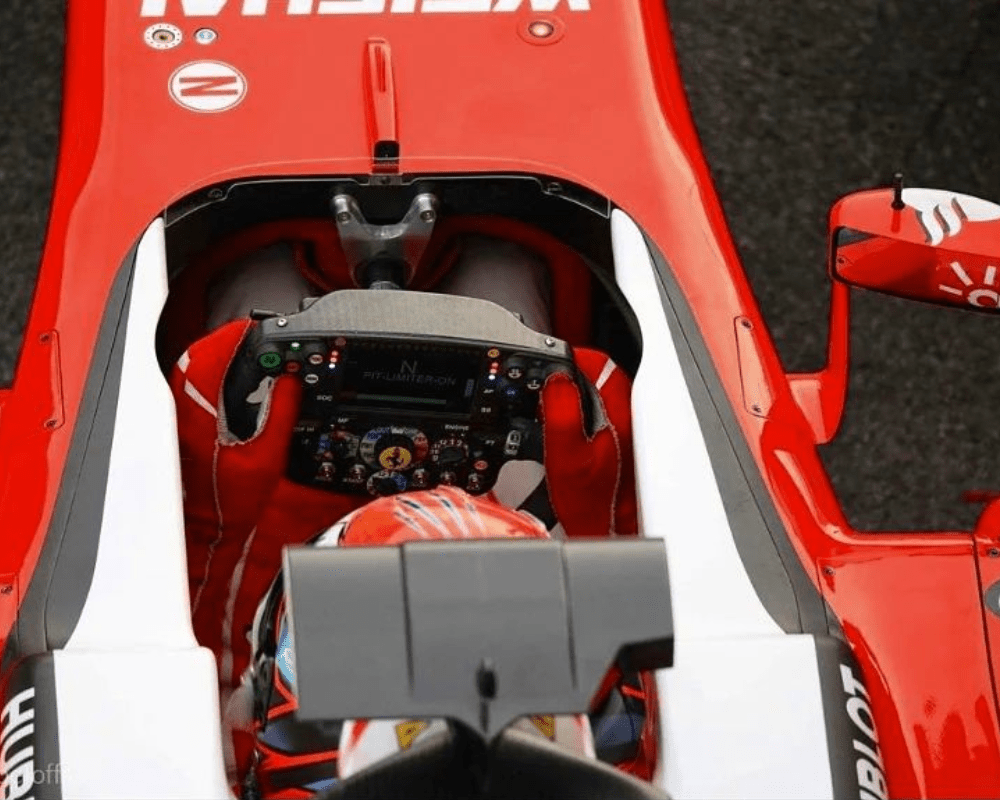
Some drivers choose to hold it, but some drivers simply…go. You’ve got to do what you’ve got to do, after all. Their team lets them know that it’s okay and to focus on the race. They’ve probably got some strong cleaning products lined up for afterward.
It Costs Some Serious Dough
Some sports just need a ball, some talent, and a dream. Formula 1 is not one of those sports. It frequently lands on lists of the most expensive sports, which makes sense when the average F1 car costs $12.2 million.
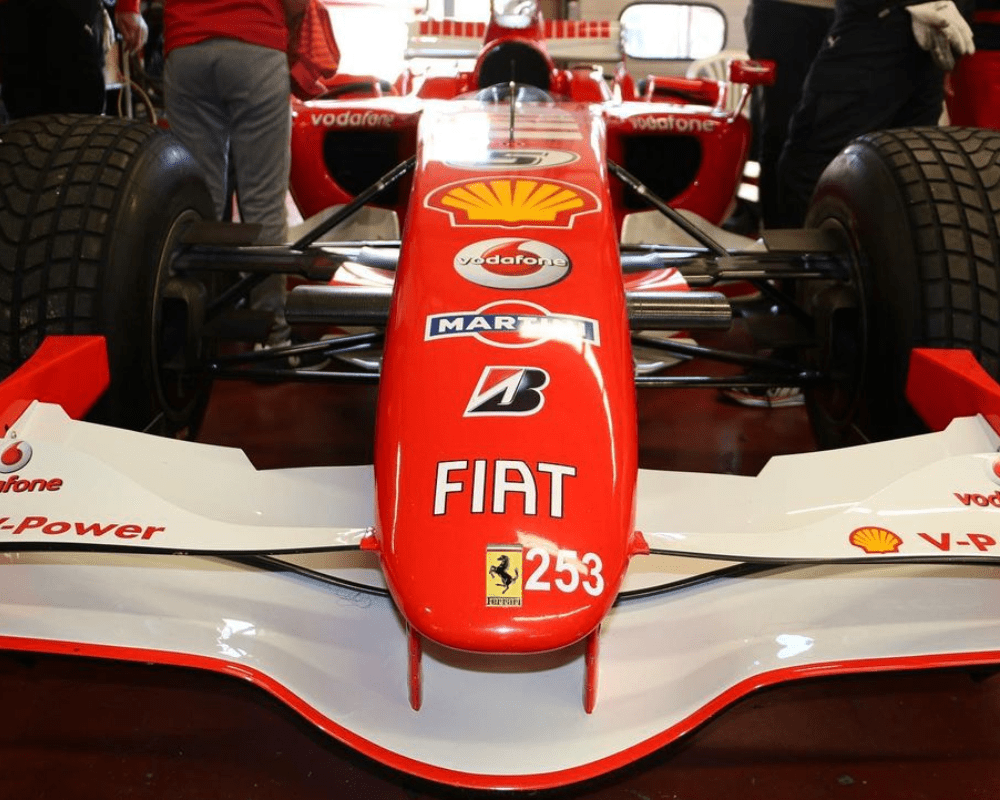
When you factor in crashes, frequent engine and tire changes, fuel, and other costs, it’s no surprise that you need some serious money backing you in order to participate. Even the cheapest cars on the smallest teams still cost millions of dollars.
Father-Son Racing Duos
There are 12 father-son duos that have competed in Formula 1 racing, but only one has been the most successful. Father Graham Hill and son Damon is the only duo to have both won world championships.
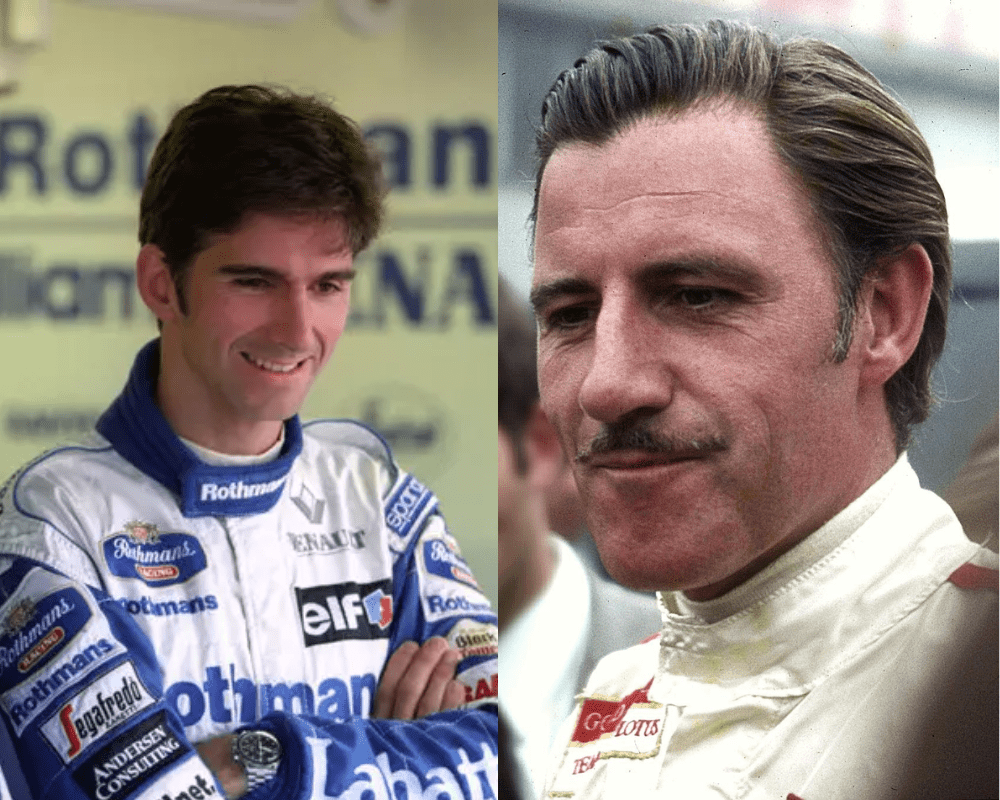
Graham died in a tragic plane crash, but his son Damon honored his memory by racing with the same helmet design. He even finished his final race with the same team in 11th place, right where his dad had finished.
Crashes at High Speeds
Car crashes are dangerous. The human body isn’t built to handle so much force, especially if said crash is happening at an extreme speed. Thankfully, F1 cars are some of the safest cars in the world.

F1 vehicles have to pass hundreds of safety regulations to be eligible for the sport, and the driver’s cockpits, while being horribly uncomfortable, are protected as much as possible, meaning they could survive the impact of a crash at 100 mph easily.
The Fastest Lap Ever
The Italian race course Monza is dubbed “Tempio della velocità”—The Temple of Speed—for being a true race course. Drivers can reach insane speeds of up to 230 mp/h, which makes for a very fast lap indeed.

Once again, Lewis Hamilton holds the lap record at 1 minute and 41 seconds, which he accomplished at the 2020 Italian Grand Prix. He said it felt amazing, but we find it hard to believe that going nearly 250 mp/h is enjoyable!
A Pileup in the Rain
In 1998, the famous Spa Grand Prix in Belgium had just kicked off in horrendous conditions. With visibility low from car spray, the chances of a crash were high. But nobody was expecting this.
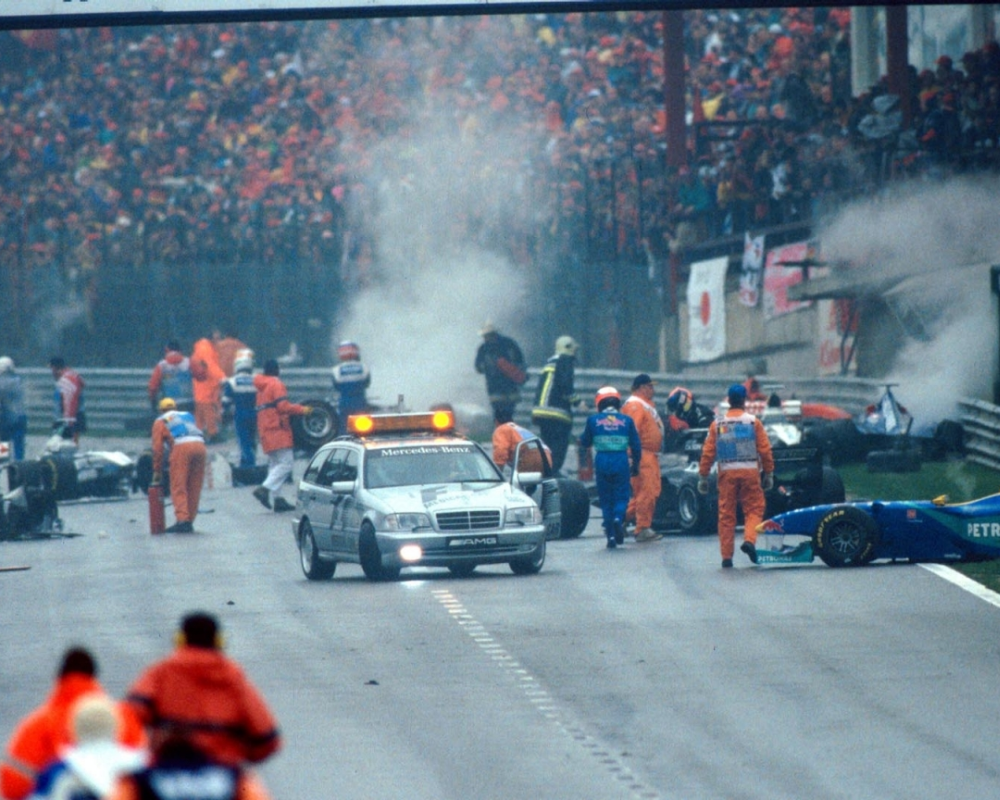
As front-runner David Coulthard whipped around the corner, he lost grip and shunted into a metal barrier. The cars behind him had nowhere to go on the narrow track, and Coulthard’s collision caused a 13-car pileup, the biggest in F1 history.
Windy Hills of Italy
In Formula 1, there is a minimum race length of 190 miles, which means that the racers have to complete as many laps as are needed to reach that distance. That wasn’t too hard to achieve at Pescara Circuit, F1’s longest circuit.
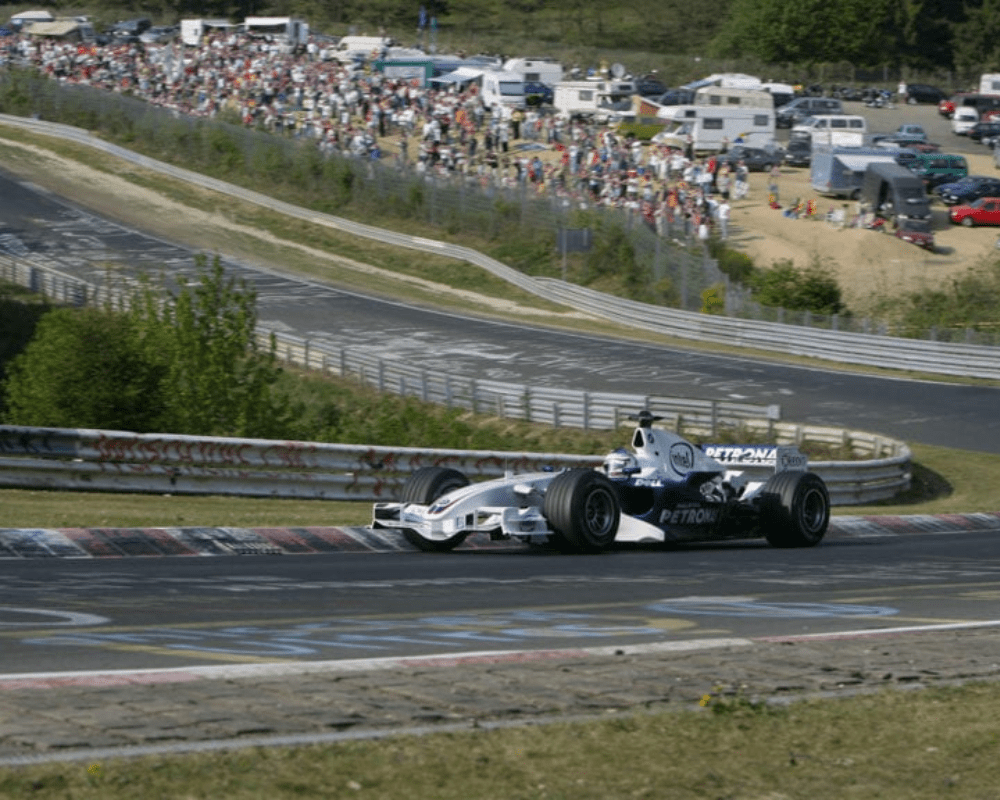
The circuit is 16 miles long and saw its last F1 race in the 1957 Pescara Grand Prix. It was an extremely challenging, windy course, so it isn’t surprising that it’s no longer in use.
Three’s a Crowd
Things got a bit weird at the 1997 European Grand Prix. Jacques Villeneuve got a provisional pole position with a lap time of 1:21.072. But a few minutes later, Michael Schumacher set the exact same lap time.
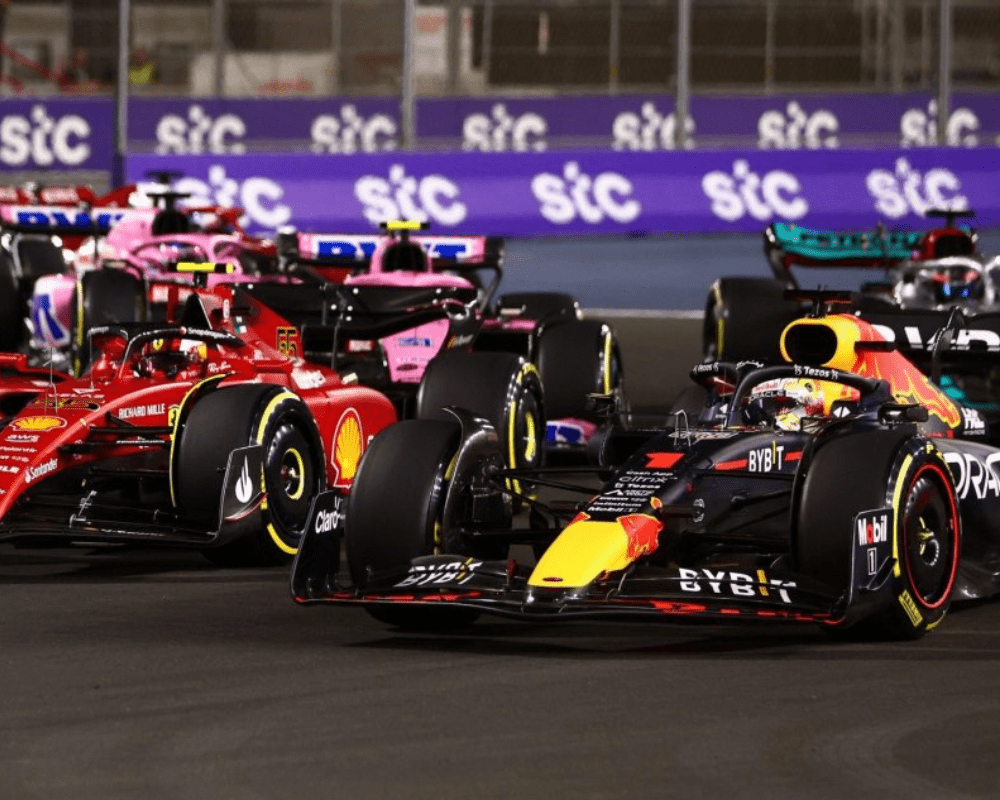
But it gets even weirder. Heinz-Harald Frentzen then ALSO set the exact same time, making it three drivers on pole position! It was ultimately decided that the one who registered their lap first was on pole, which means Villeneuve landed the position.
Biggest Separation Between Drivers
There are gaps between drivers in a race, and then there’s Jim Clark versus everyone else in the 1963 Belgian Grand Prix. He holds the record for the biggest time gap, being a whopping 4 minutes and 54 seconds ahead of the driver in second place.
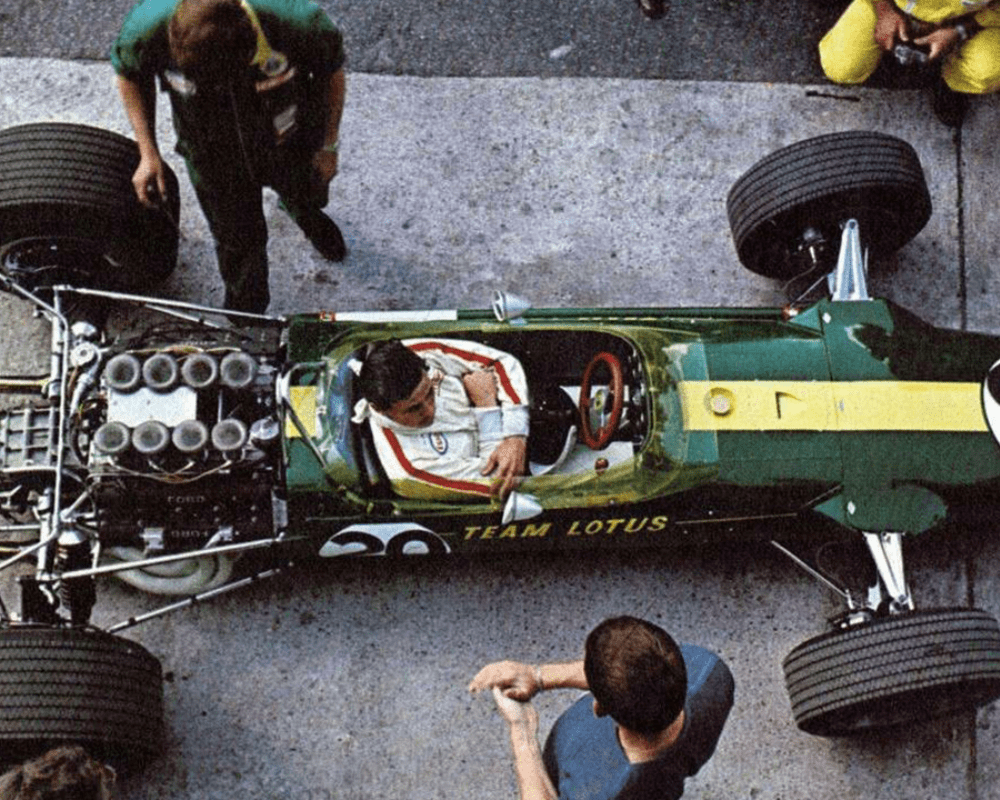
Only one other driver was able to even stay on the same lap as him, but he was super behind as well. It was considered not only one of the greatest drives of Clark’s career but in the history of F1.
Driving Upside Down
Have you ever wanted to drive upside down? Maybe it’s something you fantasized about as a kid as you watched your Hot Wheels race through that track loop like it was nothing. Well, theoretically, an F1 car could achieve just that.
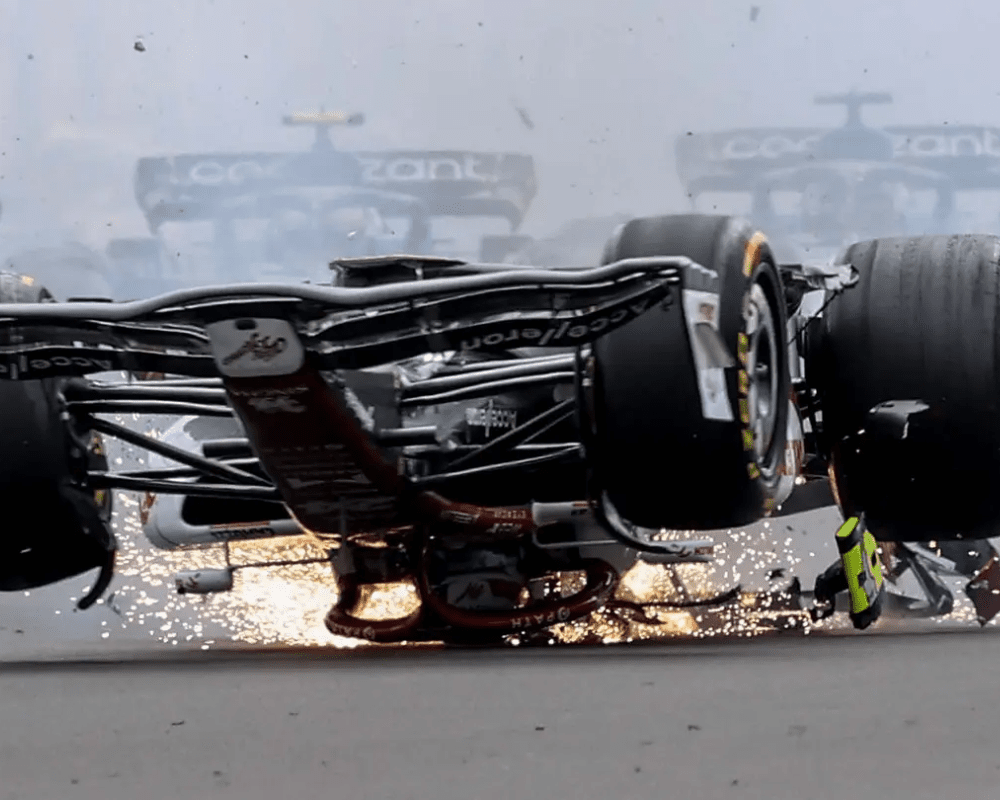
F1 cars are very aerodynamic, and the downforce could let them produce 3.5G, so at 120mph in the right conditions, they could drive upside down like it was nothing. We doubt anyone wants to volunteer to test this theory, though.
Fabi Never in the Lead
You would think that being part of Formula 1 history would be a good thing, but Teo Fabi may not agree when it comes to this fact. He is, unfortunately, the only driver who has scored multiple pole positions but never led a race for a single lap.
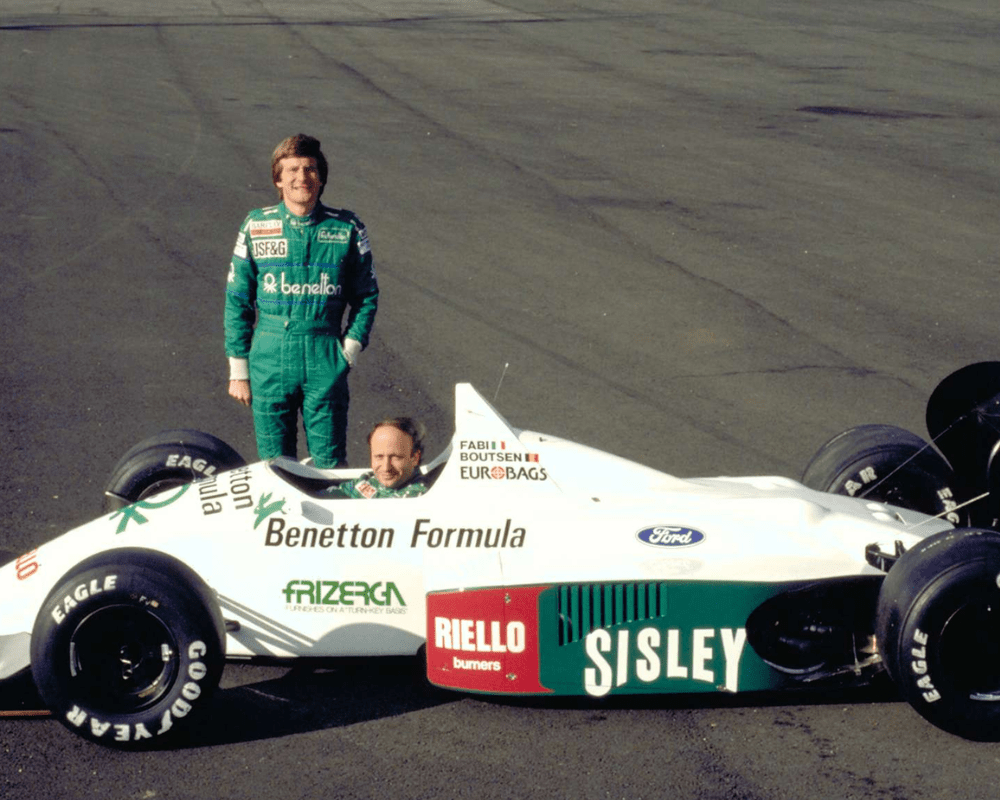
The pole is supposed to give you an edge, but due primarily to issues with his car, he was never able to stay in the lead. By the end of his career, he had finished 56 laps in second place, but he never got that lead position. That must have hurt.
Their Tires Lose Weight Too
We’ve learned that F1 drivers lose several pounds during a race due to the stress on their bodies. But the drivers aren’t the only thing losing weight in a race. Their tires can lose up to 1.5 pounds as well!

F1 tires are built for peak performance, not for longevity, so they wear down quickly from all of the braking, high speeds, and G-forces. They only last an average of 60 to 120 miles, which is much less than the 10,000 miles of normal car tires.
Lots of Moving Pieces
You’d be surprised how many pieces go into building a car. A Formula 1 car has over 80,000 components to make it the glorious machine it is. That’s a lot of engineers and not a wasted piece of material. Every single piece has its role in the larger scheme of things.

The margin for error is so slight that components have to be fixed within a 99.9% accuracy window for the machine to perform optimally. Talk about high stakes!
Cars Can’t Weigh Under 798 Kilos
Despite the multitude of components in a Formula 1 car, they need to be feather light to compete at the highest level. However, there is a minimum weight requirement that’s measured by the mass of the car with the driver, fitted with dry-weather tires, but without fuel.
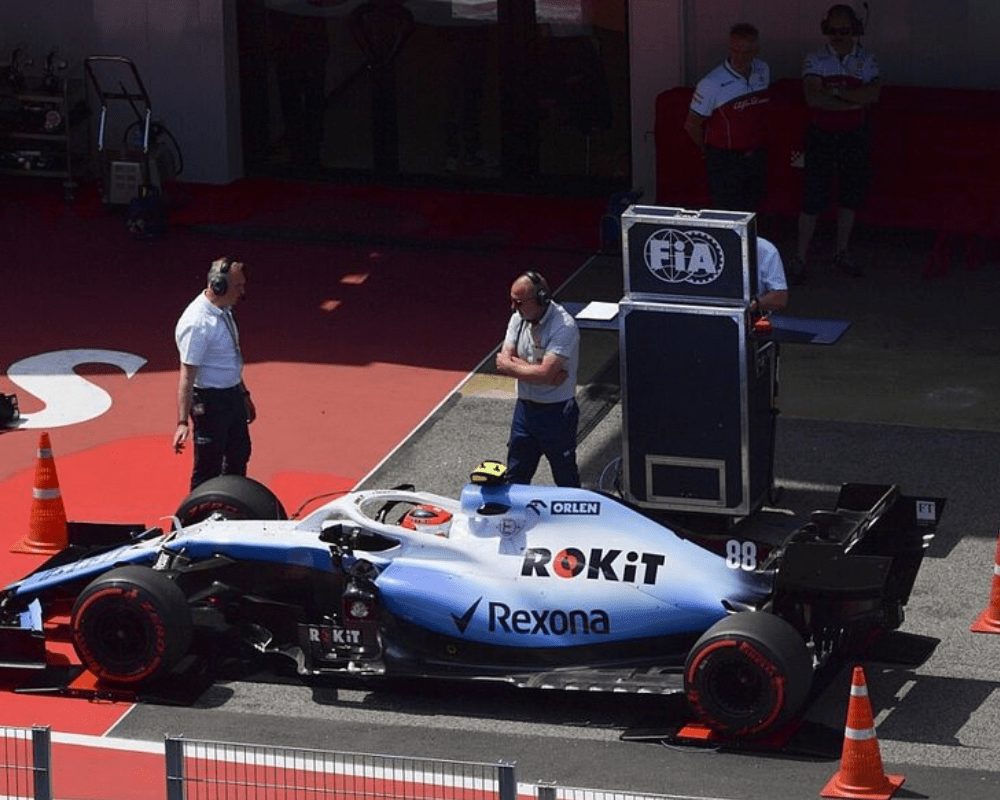
Interestingly, there’s no upper limit to the weight of a Formula 1 car, but engineers will secretly aim to make it even lighter so they can justify adding miscellaneous weight to important parts of the car.
Faster Than NASCAR
Like Formula 1, NASCAR is a very popular racing sport. But that’s where the similarities end. F1 cars are faster, but NASCAR cars are more durable. NASCAR cars are heavier and sturdier than F1, but this makes them slower.
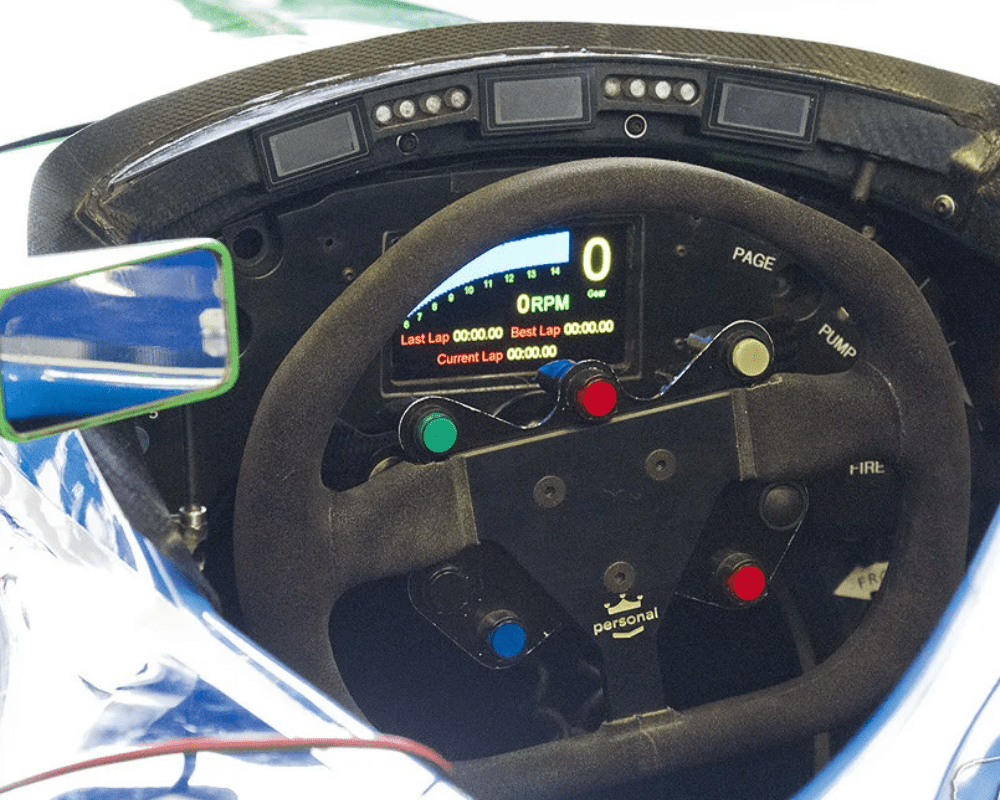
F1 wins on speed, as cars can achieve top speeds of over 220 mp/h. That’s about half the speed of the average airplane! NASCAR comes in second at around 200 mp/h. F1 cars can also go from standing to their top speed in just 10 seconds!
Formula 1 has dominated the racing world since its start in 1950. Its long history has led to a plethora of incredible drivers and interesting changes to the sport. It remains popular today with millions of viewers around the world. From being one of the most publicized events in the world to drivers losing weight every race, we’ve compiled a list of some of the most surprising Formula 1 facts and statistics!